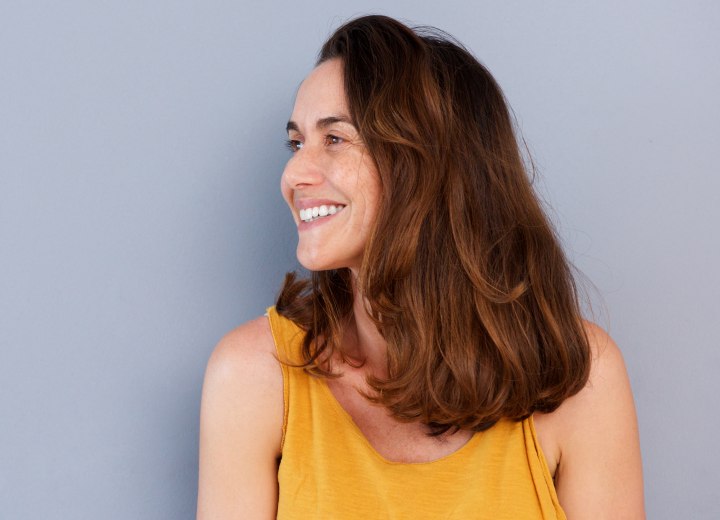Straight Hair Without Heat Styling Damage

A: What you're experiencing is actually quite common after getting layers. Your hair likely has some natural wave pattern that wasn't visible before. When hair is all one length, the weight of the hair pulls it straight, effectively masking any natural wave or bend. When layers are cut, this removes some of that weight, allowing the natural texture in your hair to emerge, particularly in the shorter sections.
There are several heat-free methods you can try to encourage your hair to lie straighter.
First, consider your washing routine. Using a smoothing shampoo and conditioner designed for straight hair can help reduce frizz and encourage straighter drying. When towel-drying, avoid rough rubbing which can create frizz and bends. Instead, gently squeeze out excess moisture with a microfiber towel or cotton t-shirt.
While your hair is still damp, apply a small amount of anti-frizz serum or straightening cream from mid-length to ends. This can help weigh down those layers slightly and encourage them to dry straighter. Comb your hair thoroughly with a wide-tooth comb to ensure the product is distributed evenly.
You might also try the "wrap method," where you comb your damp hair flat against your head, wrapping it around in a circular direction. Secure with pins or clips while it dries, which can help train your hair to lie flatter.
Sleeping with your hair secured in a loose, low ponytail or wrapped in a silk scarf can also help maintain straightness overnight. Using a silk pillowcase reduces friction and helps prevent those irregular bends that can form while sleeping.
If you do decide some heat is necessary, you can minimize damage by using the lowest effective heat setting on your tools. A blow dryer on cool or warm (never hot) with a large round brush or paddle brush can help guide your layers to turn inward rather than outward. Always apply a heat protectant first, even at lower temperatures.
For occasional use, a flat iron on the lowest setting can be used with minimal risk. Try applying a light hold hairspray, allowing it to dry completely, and then using the iron at the lowest effective temperature. Start with the coolest setting and only increase as needed.
Your hair will likely adapt somewhat to the new cut over time. Many people find that after a few weeks, their hair "settles" into the layered style and becomes easier to manage. If you're still unhappy with the results, consider talking to your stylist about slightly adjusting the layers to work better with your hair's natural tendencies.
©Hairfinder.com
See also:
The pros and cons of layers for hair
How to blow dry hair straight
How to keep hair flat and straight